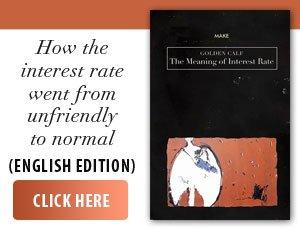The total costs of the conflict in Ukraine so far are enormous, but so far they do not exceed 15% of the estimated value of the country's mineral resources, a value that experts estimate at $11.5 trillion.
The war has caused huge direct and indirect economic losses, both for Ukraine and Russia, but also for the global economy.
As for Ukraine, according to information published by the Institute for the Study of War (ISW) and the Kiel Institute for the World Economy, GDP fell by more than 30% in 2022, with a slow and uneven recovery in the following years. Ukraine has suffered infrastructure losses estimated at over $400 billion, including roads, railways, power plants and residential buildings, is facing a drastic reduction in industrial production in occupied or fighting-affected regions, and has lost access to resources in the occupied territories worth trillions of dollars. Experts from the Kiel Institute claim that Ukraine has temporarily lost control over almost 33% of its mineral resources. According to Statista, between February 2022 and June 2025 alone, Ukrainian trade, industry and agriculture companies recorded total losses of $589 billion.
In contrast, Russia records annual military costs of tens of billions of dollars, as economic sanctions have reduced this country's access to international markets, advanced technologies and foreign investment. In addition, Russia lost over $300 billion in frozen foreign assets, recorded a GDP contraction of -2.1% in 2022, inflation of 14%, depreciation of the ruble by over 30% and the withdrawal of over 1,000 Western companies. On February 18, 2025, the Russian ruble was worth 0.01093 US dollars, which represents an 8% decrease since Russia's invasion of Ukraine. At the end of 2024, Russia recorded an inflation rate of 9.5%, a 21% reference interest rate, a rate that made it very difficult for many companies in the country to survive, which was reflected in a 26% increase in corporate bankruptcies at the end of last year compared to 2023, according to data published by the Interfax agency. However, Russia also recorded benefits. Thus, Russia occupied and annexed significant territories in Ukraine. After the outbreak of the war in February 2022, Russia occupied another 12% of Ukrainian territory, which it added to the 7% it controlled (which also included Crimea) before the full invasion on February 24, 2022. Then, the territorial gains allowed Russia to seize a larger part of Ukraine's natural resources. But the most important gain of the conflict that began in 2022 is the reduction of the probability of Ukraine joining NATO and the maintenance of the barrier against this alliance. Practically, at the moment, eight allied states, including the USA, do not agree with the admission of Ukraine to NATO.
We also mention that the costs of the two states are also added to the loss of human lives, the loss of military equipment, and the expenses for caring for the wounded in the conflict. Estimates of the number of Russian soldiers killed, wounded or missing vary, but the most recent show victims of 700,000 or more, for a daily rate of 670 victims, according to data published by the Pentagon and the New York Times. While the American president claims that both sides have lost more than a million people in the war, a figure also circulated by British authorities.
Regarding the cost to the US of the war in Ukraine, the Kiel Institute shows that the Washington Administration contributed $ 122 billion in financial, humanitarian and military aid to Ukraine, while Radio Free Europe stated that the support would have amounted to $ 175 billion, an amount also circulated by Economics Stack Exchange. According to data from the Center for Economic Policy Research (CEPR) in the first three years of the conflict, the monetary aid provided by the US was $50.9 billion, of which $18.3 billion was for military support and $32.6 billion was direct budgetary support (through reimbursement of expenses and loan guarantees).
Regarding the involvement of the European Union, according to information published by the Jacques Delors Center, the community bloc and its member states have provided substantial aid, consisting of over $65 billion in the form of military support (weapons, ammunition, defense systems, etc.) and over $92 billion in financial, budgetary, humanitarian and emergency support. According to the Kiel Institute for the World Economy, the aid allocated by the EU (and its member countries) is estimated at $138 billion, compared to $119 billion from the US (according to the New York Post). In addition to this amount, in 2022, member states a negative impact of 175 billion euros, representing between 1.1% - 1.4% of EU GDP, costs that include: 50 billion euros to counter the energy shock (through subsidies, tax cuts, etc.); 75 billion euros for energy independence strategies and 30 billion euros for the costs related to receiving refugees.


















































